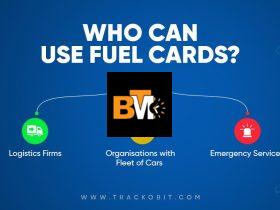When you share the road with large commercial trucks, you may not realize the hidden danger lurking beneath their trailers. Underride accidents, where a smaller vehicle slides underneath a truck during a collision, are among the most devastating and fatal crashes on our highways. These silent killers claim hundreds of lives each year, often leaving victims with catastrophic injuries or worse. Understanding the risks and legal implications of underride accidents is crucial as you navigate busy roadways. This article will explore the nature of these collisions, their deadly consequences, and the complex liability issues you should face with the help of trucking accident lawyers. Your safety and legal rights depend on this vital knowledge.
What Are Underride Accidents?
Underride accidents occur when a smaller vehicle collides with a large truck and slides underneath it. These collisions are particularly devastating, often resulting in severe injuries or fatalities. The disparity in size between passenger vehicles and commercial trucks creates a dangerous scenario where the smaller vehicle’s safety features become ineffective.
The Deadly Consequences
Underride accidents are notoriously lethal due to the nature of the impact. When a car slides under a truck, the upper part of the passenger compartment can be sheared off or crushed, leading to catastrophic injuries. Occupants may suffer from decapitation, severe head trauma, or spinal cord injuries. The severity of these accidents has earned them the grim moniker of “silent killer” in the trucking industry.
Prevention Measures and Regulations
Safety advocates and regulators have pushed for improved truck safety features to combat the dangers of underride accidents. Rear guards, also known as “Mansfield bars,” are now mandatory on most commercial trucks. However, side guards are not yet required in many jurisdictions despite their potential to save lives.
Truck Design Flaws: Why Underride Guards Fail to Protect Motorists
Inadequate Rear Guard Strength
Underride guards, called Mansfield bars, prevent smaller vehicles from sliding beneath a truck’s trailer during a collision. However, these safety devices often fail due to inadequate strength. Many guards are not robust enough to withstand the force of a high-speed impact, bending, or breaking upon contact. This structural weakness allows cars to continue their trajectory underneath the truck, leading to catastrophic consequences for occupants.
Insufficient Side Protection
While rear underride guards are mandatory on most commercial trucks, side guards are not universally required. This oversight leaves vehicles vulnerable to side underride accidents, which can be equally devastating. The absence of side protection creates a dangerous gap where smaller vehicles can quickly become wedged beneath the trailer, compromising the car’s structural integrity and putting passengers at severe risk.
Height Mismatch and Design Limitations
Another critical flaw in underride guard design is the mismatch between guard height and the varying bumper heights of different vehicles. SUVs and pickup trucks, for instance, may impact the trailer above the guard, rendering it ineffective. Additionally, current designs often fail to account for offset collisions, where only a portion of the vehicle contacts the guard. These scenarios can result in partial underride, which is still extremely dangerous for motorists.
Maintenance and Inspection Issues
Even well-designed underride guards can fail if not properly maintained. Exposure to road debris, weather conditions, and repeated impacts can weaken the guards. Unfortunately, inspection and maintenance of these critical safety components are often overlooked or inadequate. This negligence can lead to unexpected failures during collisions, leaving motorists unprotected when they need it most.
Preventing Underride Accidents: Strategies for Improved Safety
Enhanced Truck Design and Equipment
Improving truck design is crucial for preventing underride accidents. Manufacturers are now focusing on lowering the height of truck beds and installing stronger rear guards. These guards, also known as underride guards or ICC bars, act as a barrier to prevent smaller vehicles from sliding underneath during a collision. Additionally, side guards are being implemented to protect against side underride accidents, which are particularly dangerous at intersections.
Advanced Technology Integration
The integration of cutting-edge technology plays a vital role in accident prevention. Collision avoidance systems, including automatic emergency braking and forward collision warning, can significantly reduce the risk of underride accidents. These systems use sensors and cameras to detect potential hazards and either alert the driver or automatically engage the brakes. Lane departure warnings and blind spot detection systems further enhance safety by keeping trucks in their designated lanes and alerting drivers to vehicles in hard-to-see areas.
Driver Training and Education
Comprehensive driver training programs are essential for preventing underride accidents. These programs should focus on defensive driving techniques, proper following distances, and understanding the unique challenges of operating large commercial vehicles. Drivers must be educated about the blind spots around their trucks and the importance of maintaining their vehicles, particularly the underride guards. Regular refresher courses and ongoing education can help keep safety in drivers’ minds.
Regulatory Measures and Enforcement
Stricter regulations and consistent enforcement are critical components of underride accident prevention. This includes mandating stronger underride guards, regular safety equipment inspections, and enforcing hours-of-service rules to prevent driver fatigue. Implementing and enforcing these measures can significantly reduce the occurrence and severity of underride accidents, making our roads safer for all users.
Final Thoughts
Underride accidents remain a serious threat on our nation’s highways. While safety regulations have improved, more can be done to protect motorists from these devastating collisions. As a driver, staying vigilant and maintaining a safe following distance from trucks is crucial. If you or a loved one has been involved in an underride accident, seek immediate medical attention and consult with trucking accident lawyers to understand your legal rights. The complexities of liability in these cases demand expert guidance. By raising awareness and pushing for enhanced safety measures, we can work together to reduce the occurrence of these tragic accidents and save lives on our roads.





Leave a Reply